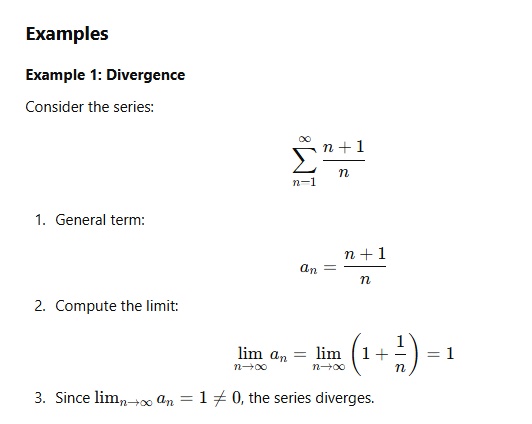How to Use the Nth Term Test for Divergence
The Nth Term Test for Divergence is a straightforward and essential tool in the study of infinite series. This test examines the behavior of the general term ana_nan as n→∞n \to \inftyn→∞, helping to determine whether a series diverges.
Understanding Infinite Series
An infinite series is written as:

Here:
an is the n-th term of the series.
The series can either:
Converge (approach a finite value), or
Diverge (grow indefinitely or oscillate).
The Nth Term Test for Divergence helps identify if a series definitely does not converge.

Why the Test Works
For a series to converge, the individual terms ana_nan must get smaller and smaller, approaching zero as n→∞.
If an does not approach zero, the sum cannot settle to a finite value, and the series diverges.
However, the reverse is not true: limn→∞an=0 is a necessary condition for convergence but not sufficient. This limitation highlights why the Nth Term Test only shows divergence.
Steps to Apply the Nth Term Test
Identify the General Term
Write the explicit formula for an.Compute the Limit
Find limn→∞an using limit laws, simplifications, or algebraic techniques.Analyze the Result
If the limit is not zero (≠0) or does not exist, the series diverges.
If the limit is zero, the test is inconclusive; use other tests (e.g., Comparison Test, Ratio Test) to check convergence.

Special Considerations
Oscillatory Terms:
If an oscillates (e.g., an=(−1)n, the limit may not exist, leading to divergence.Slowly Decreasing Terms:
Even if limn→∞an=0, the series may diverge.
Conclusion
The Nth Term Test for Divergence is a simple but powerful tool for determining whether an infinite series diverges. While it cannot confirm convergence, its application as a first step in series analysis provides essential insights. Understanding its strengths and limitations ensures accurate results and guides the use of more advanced tests when necessary.